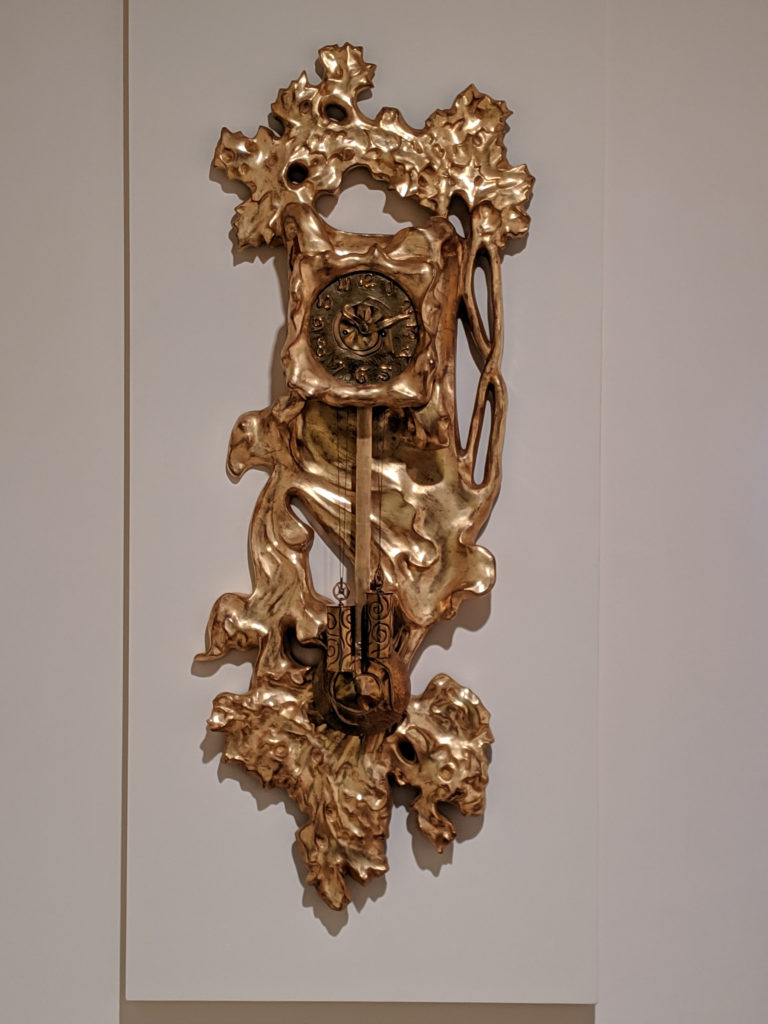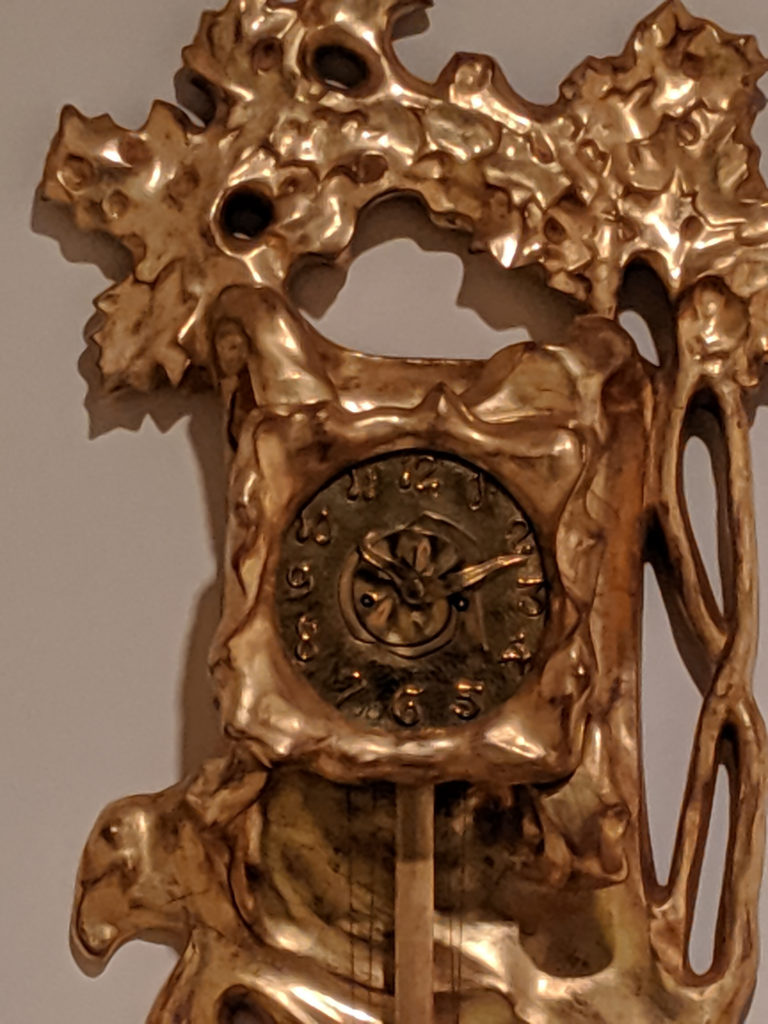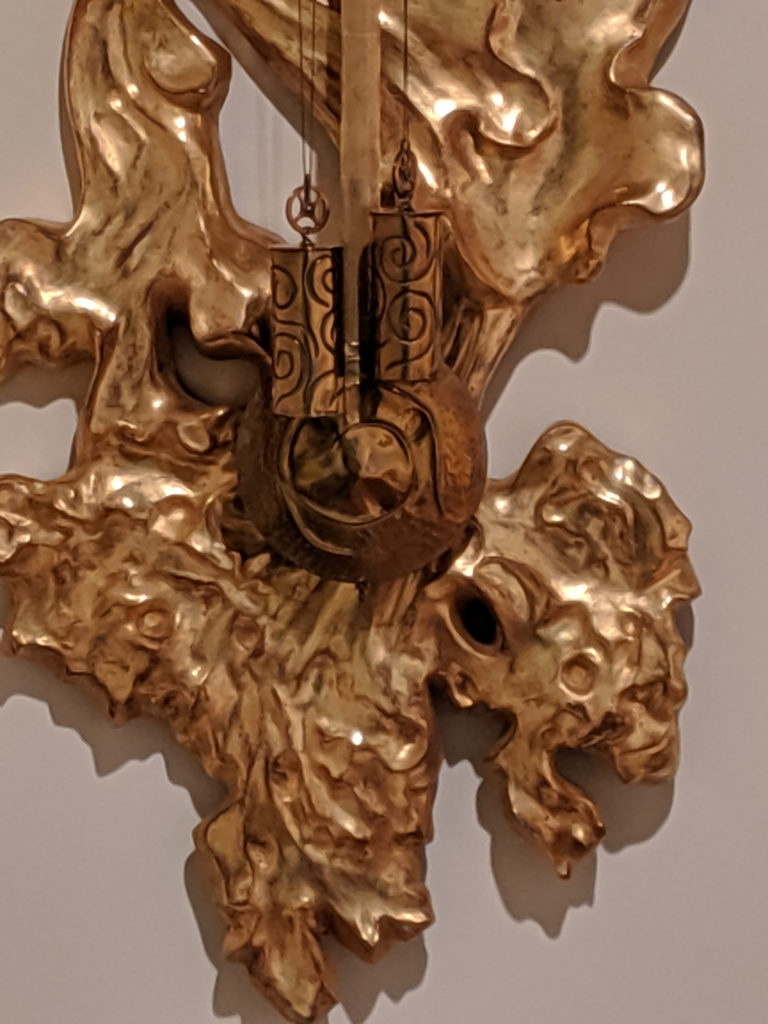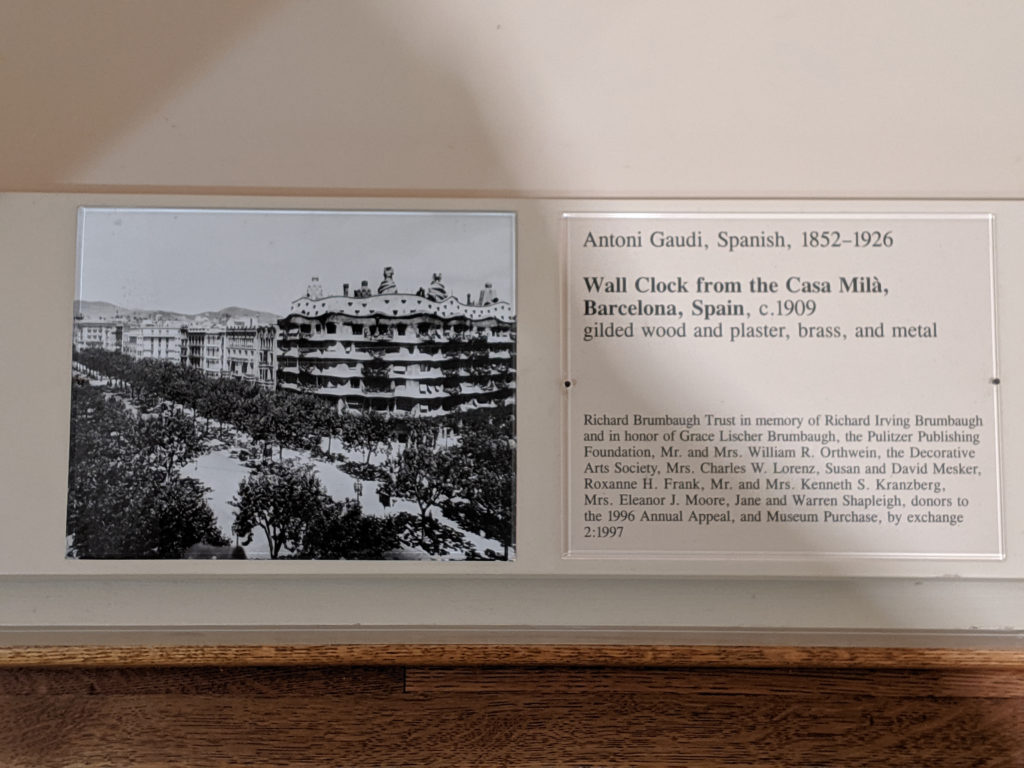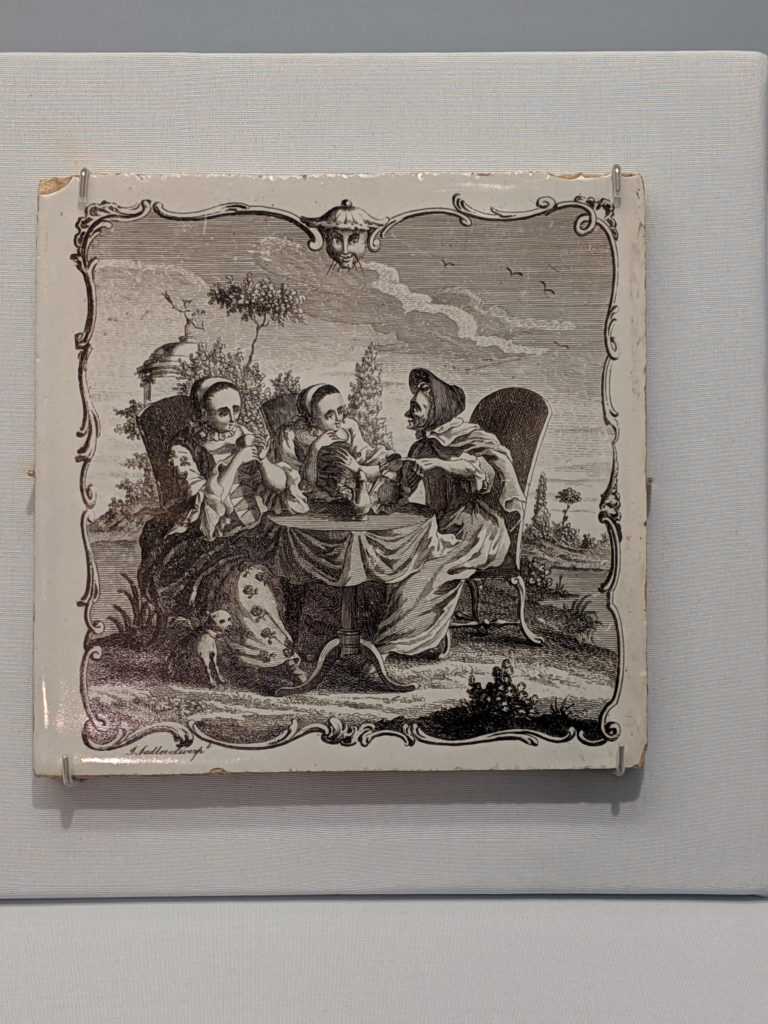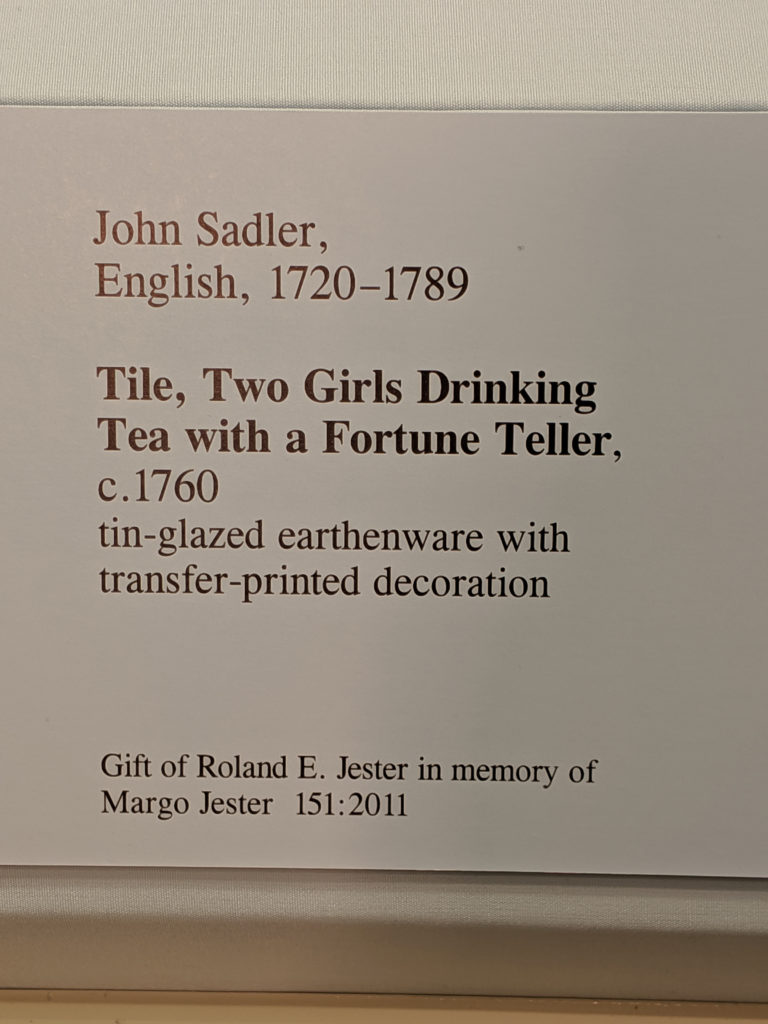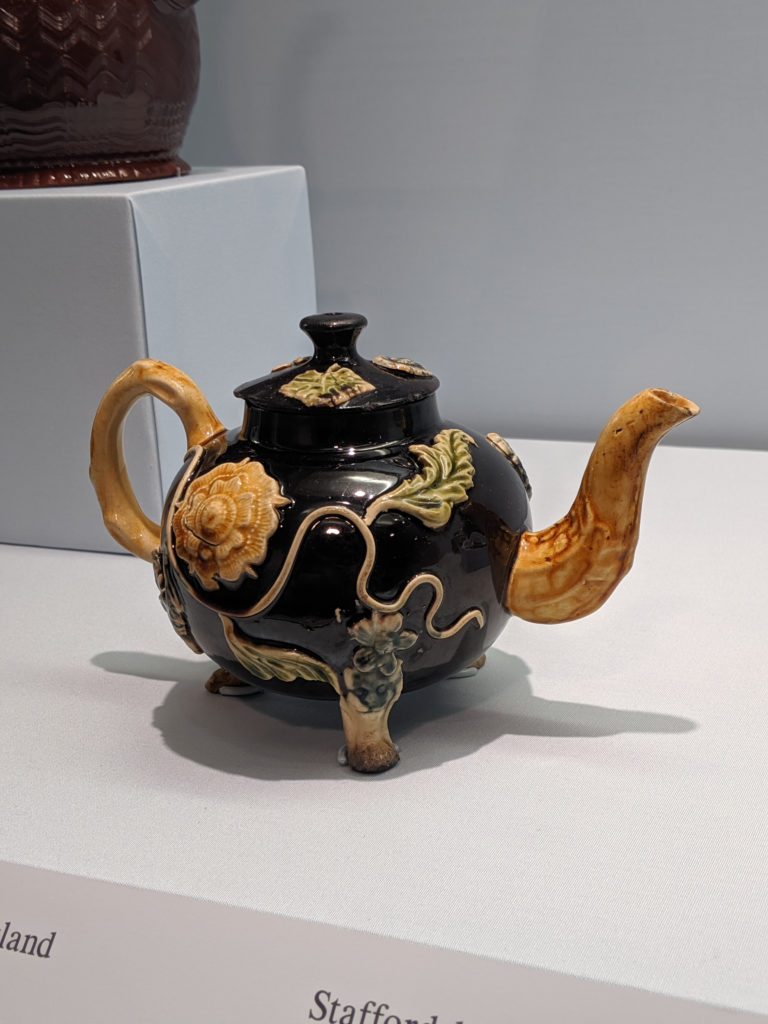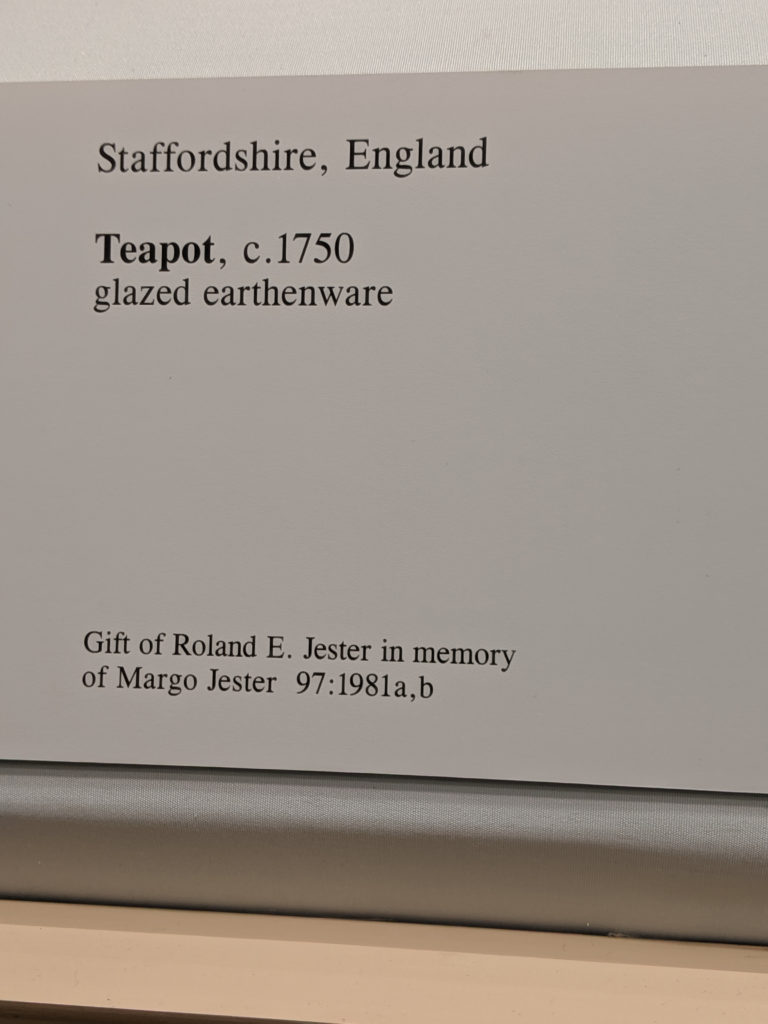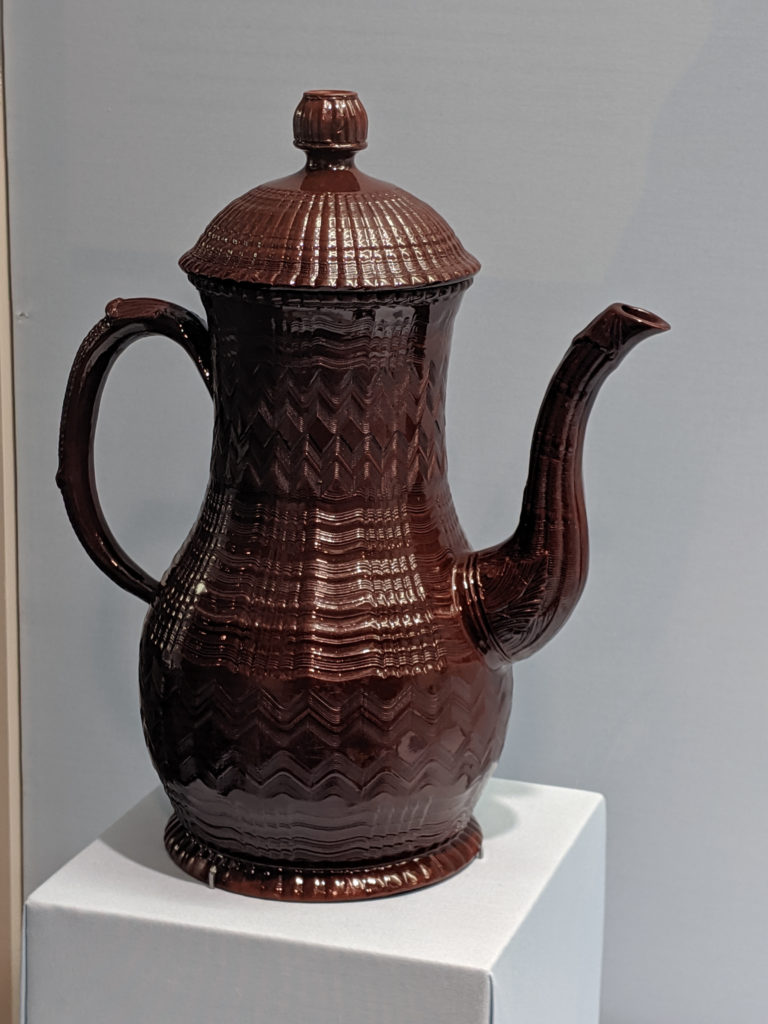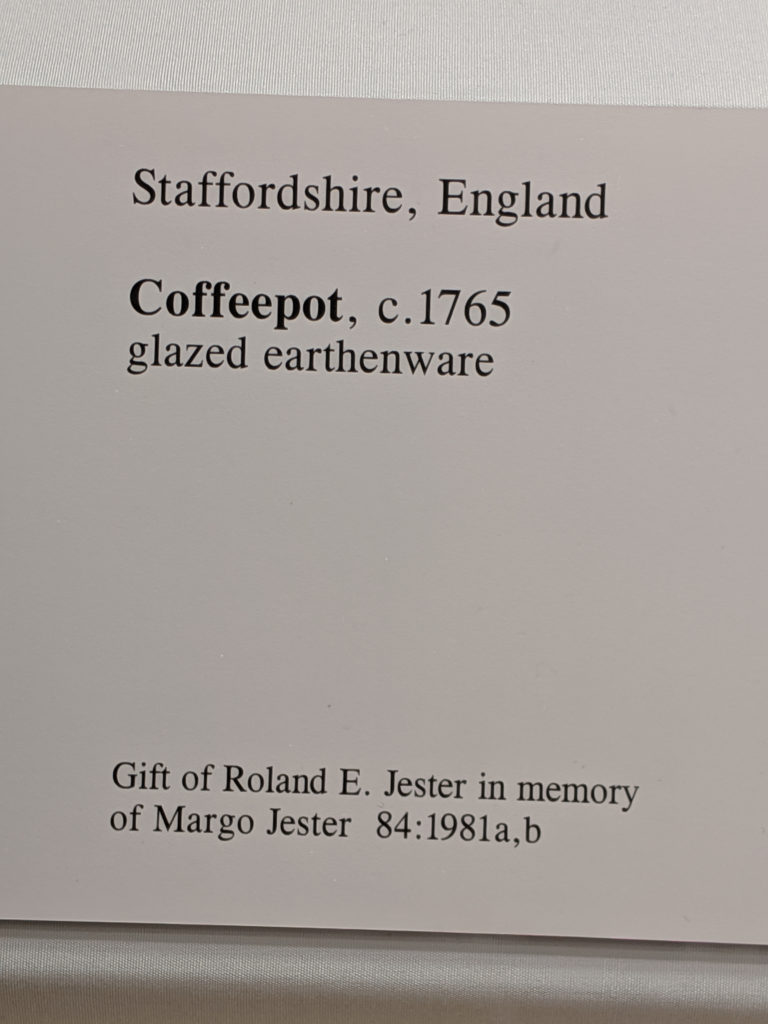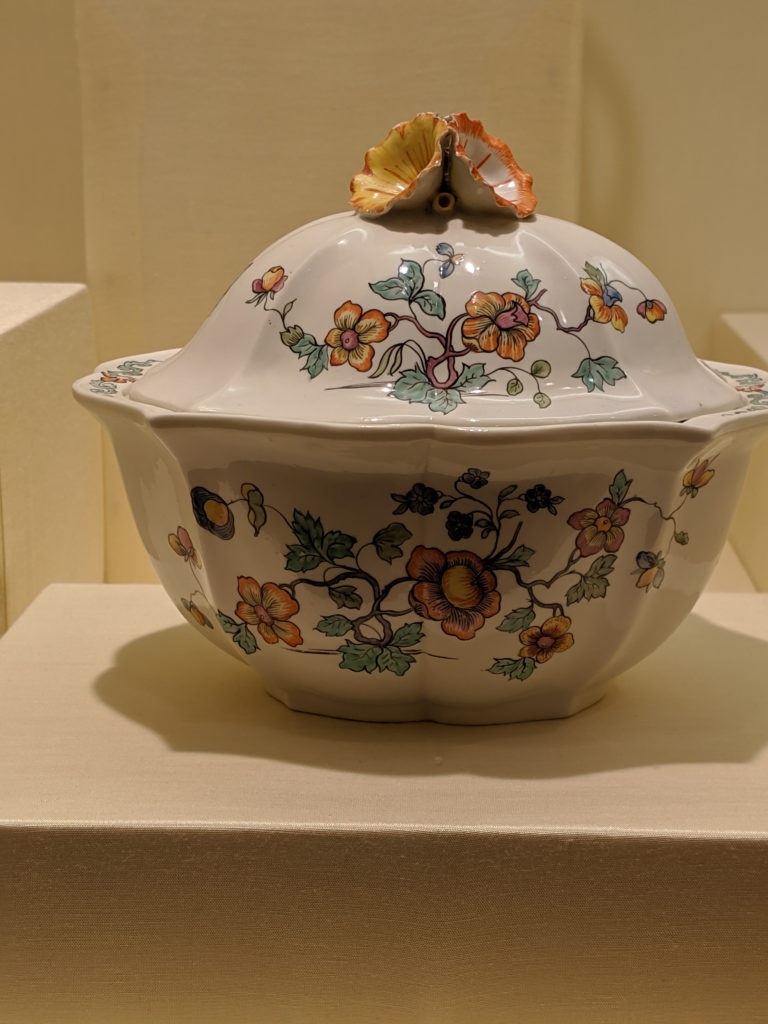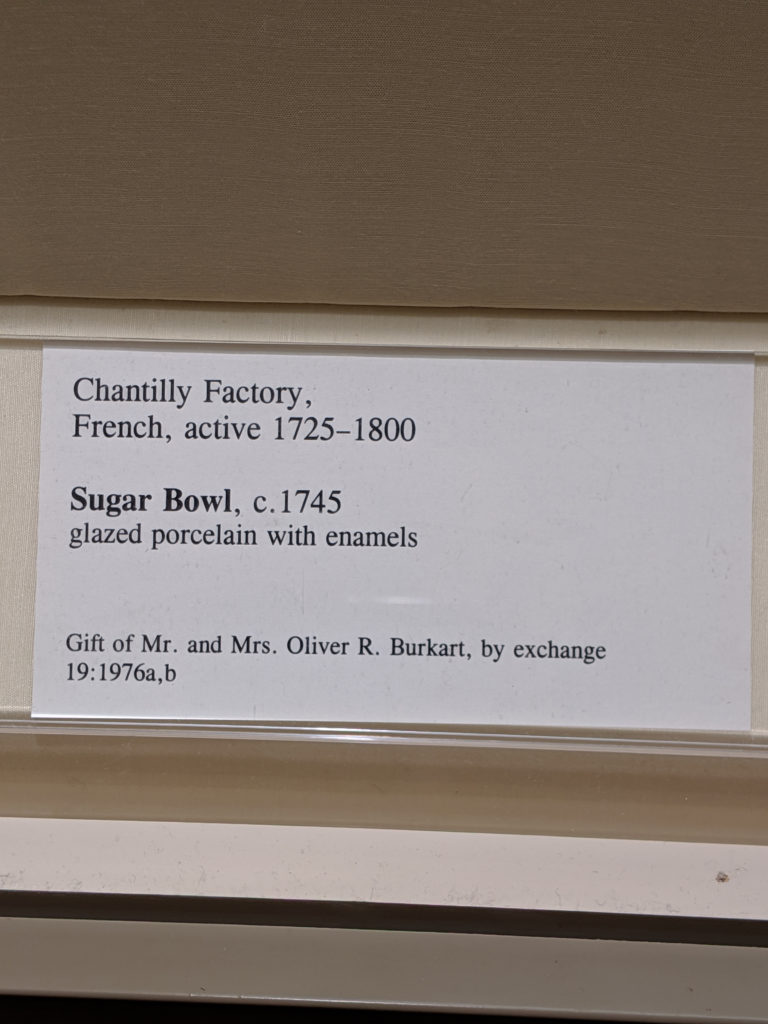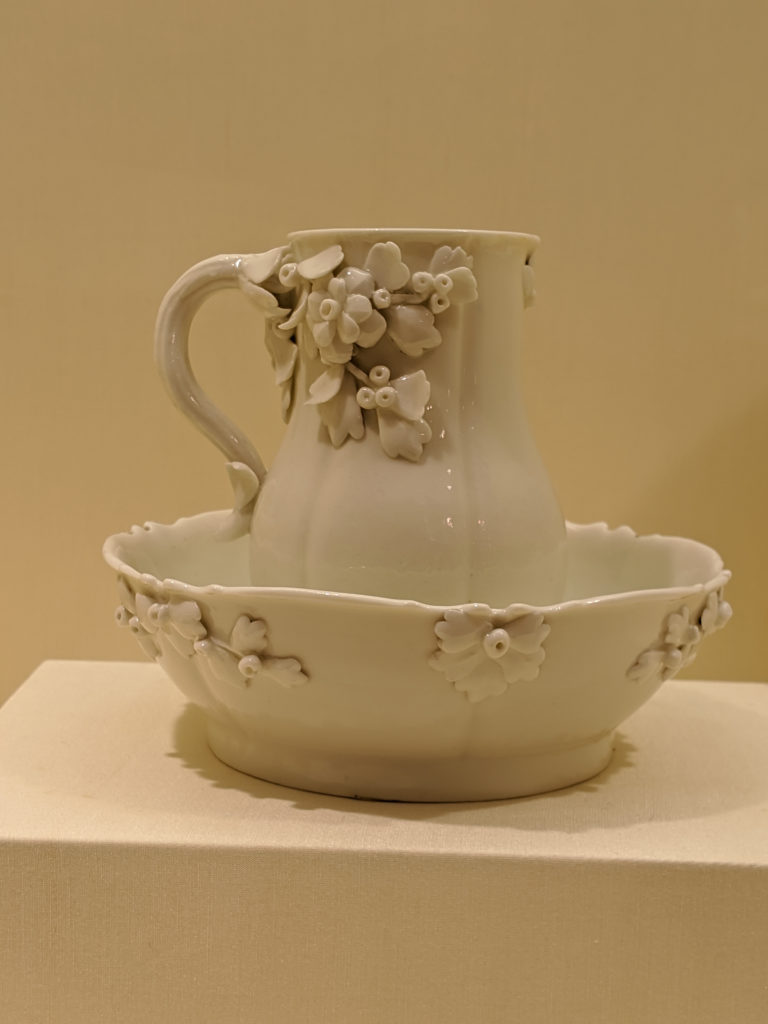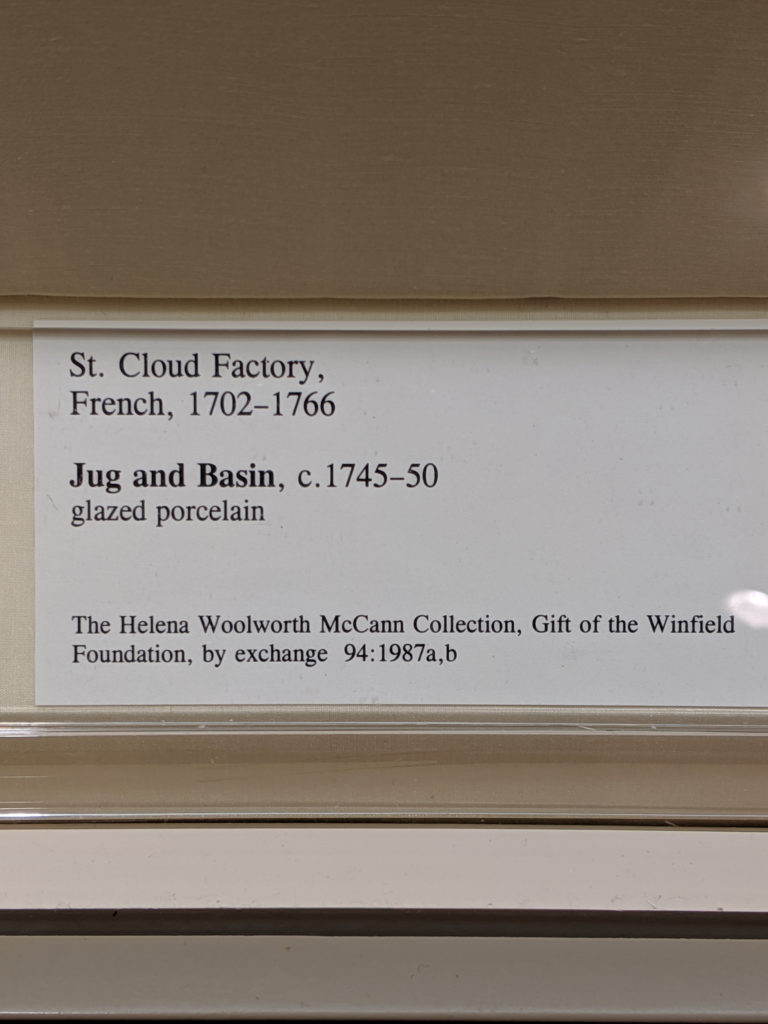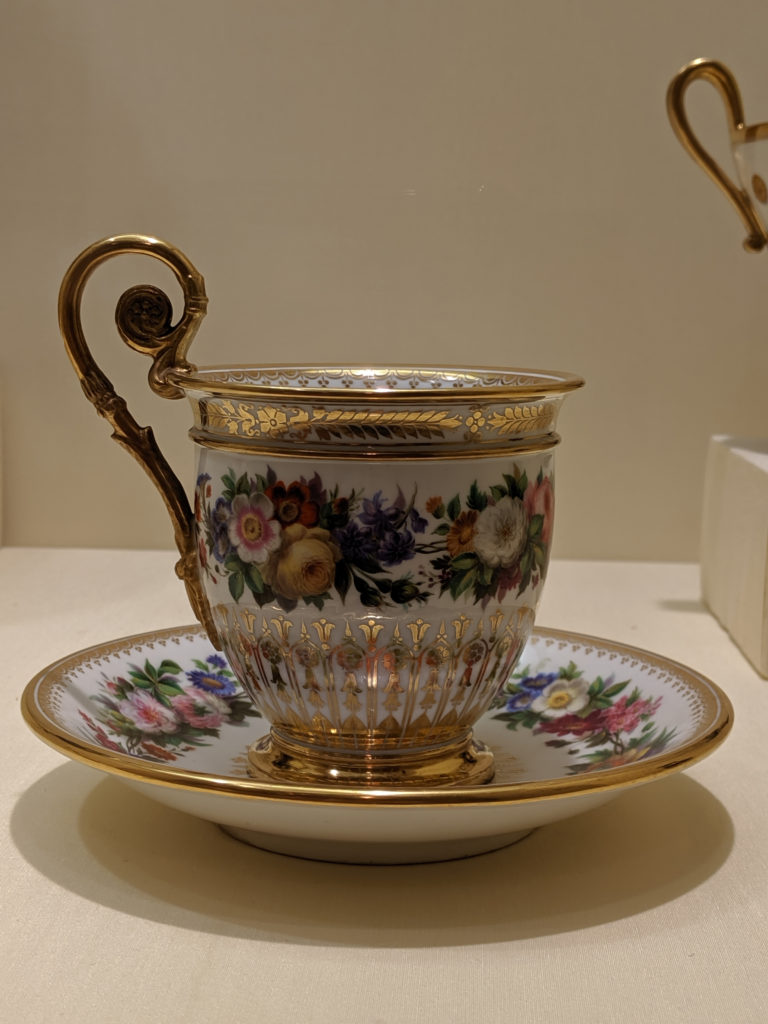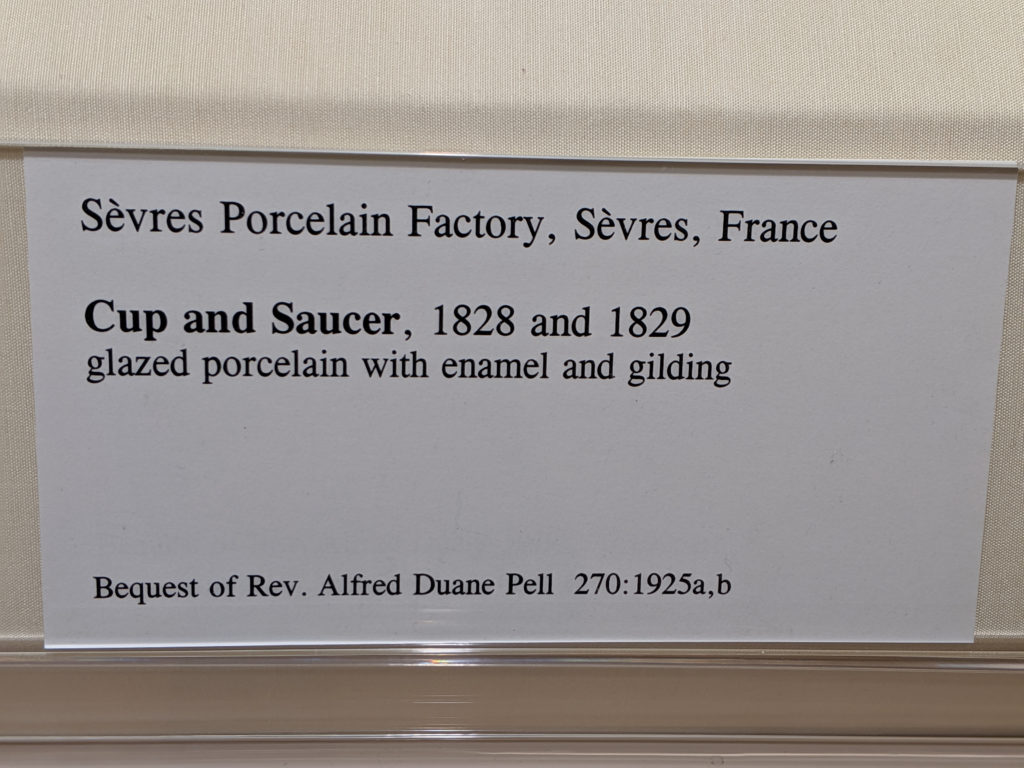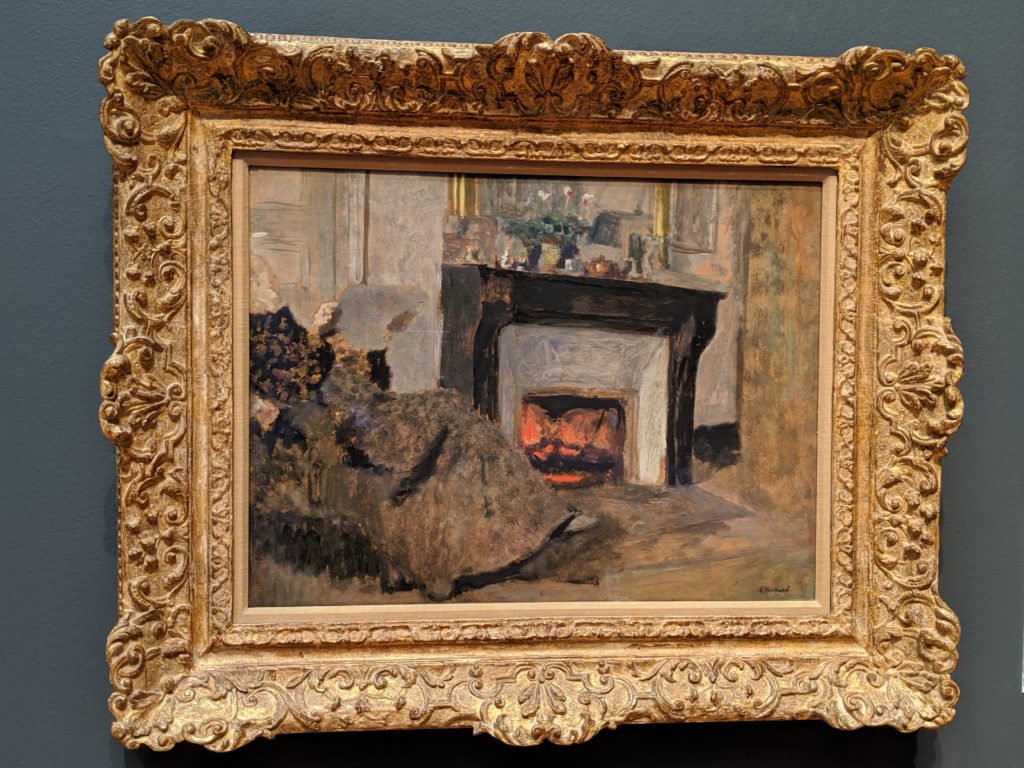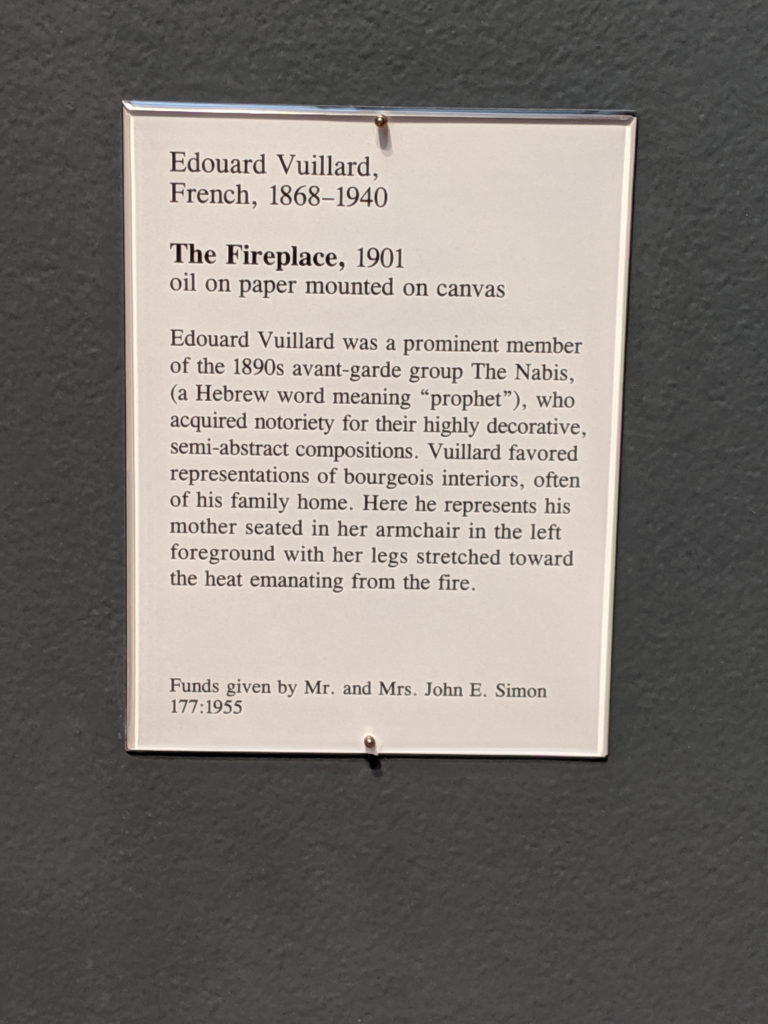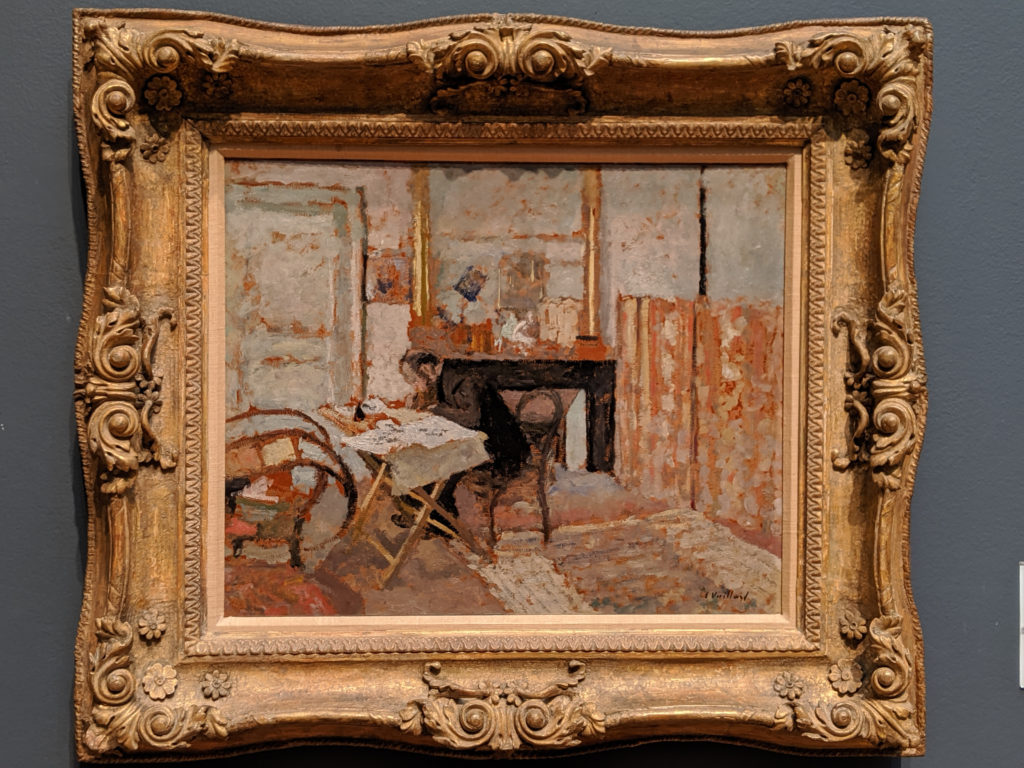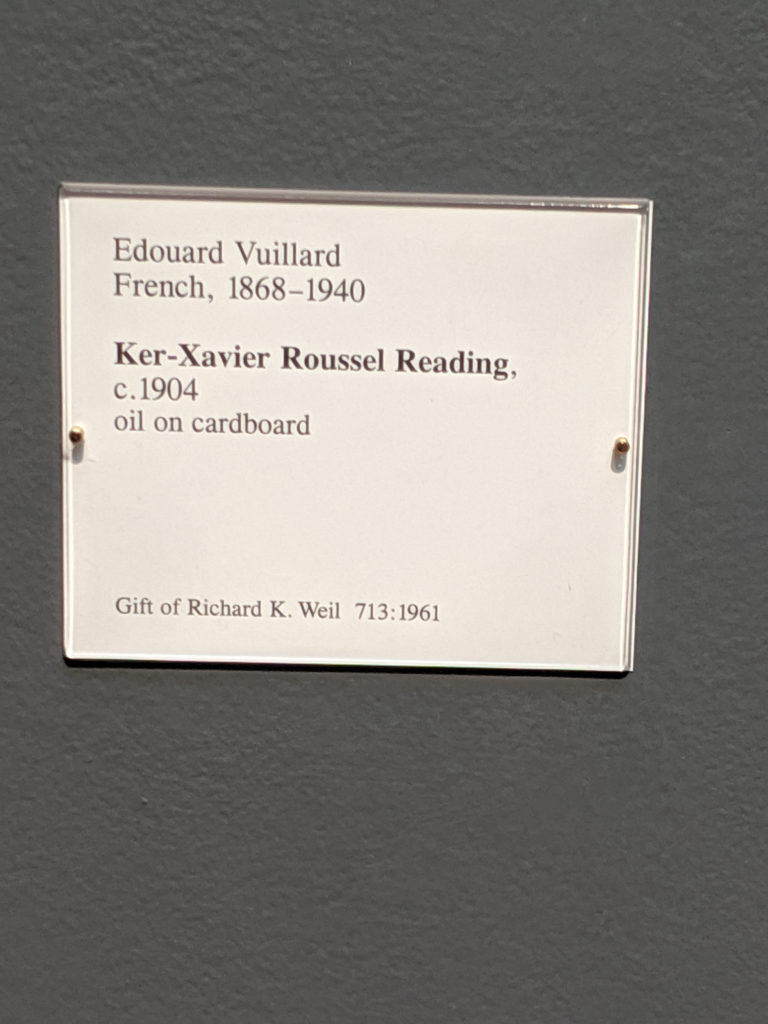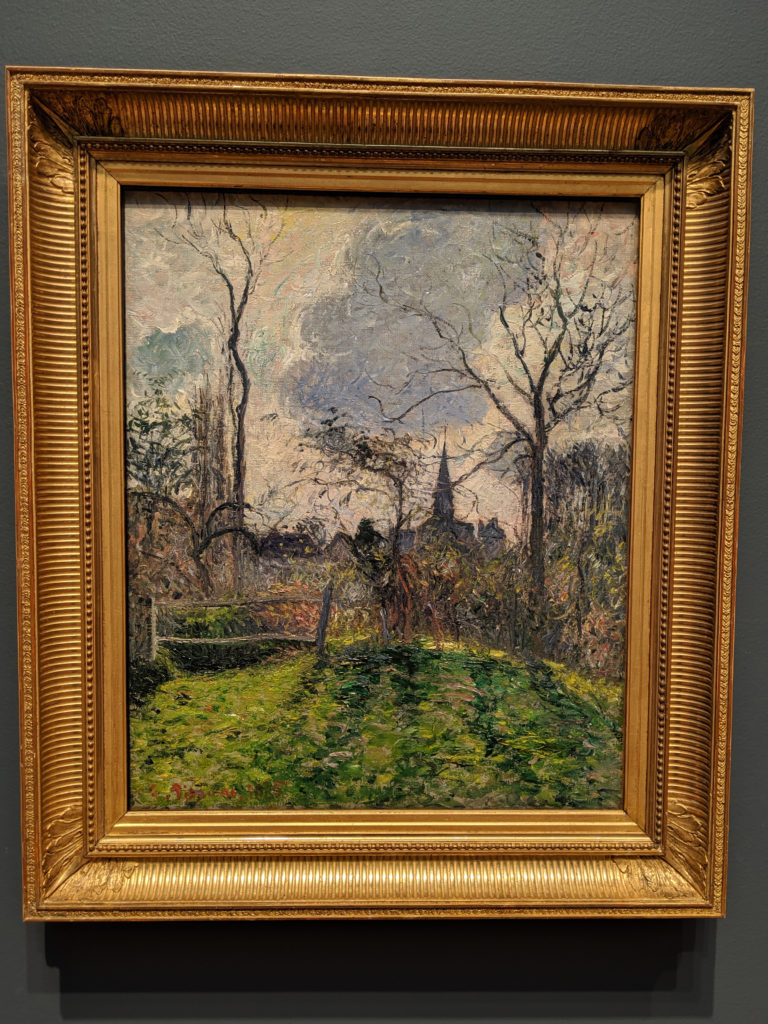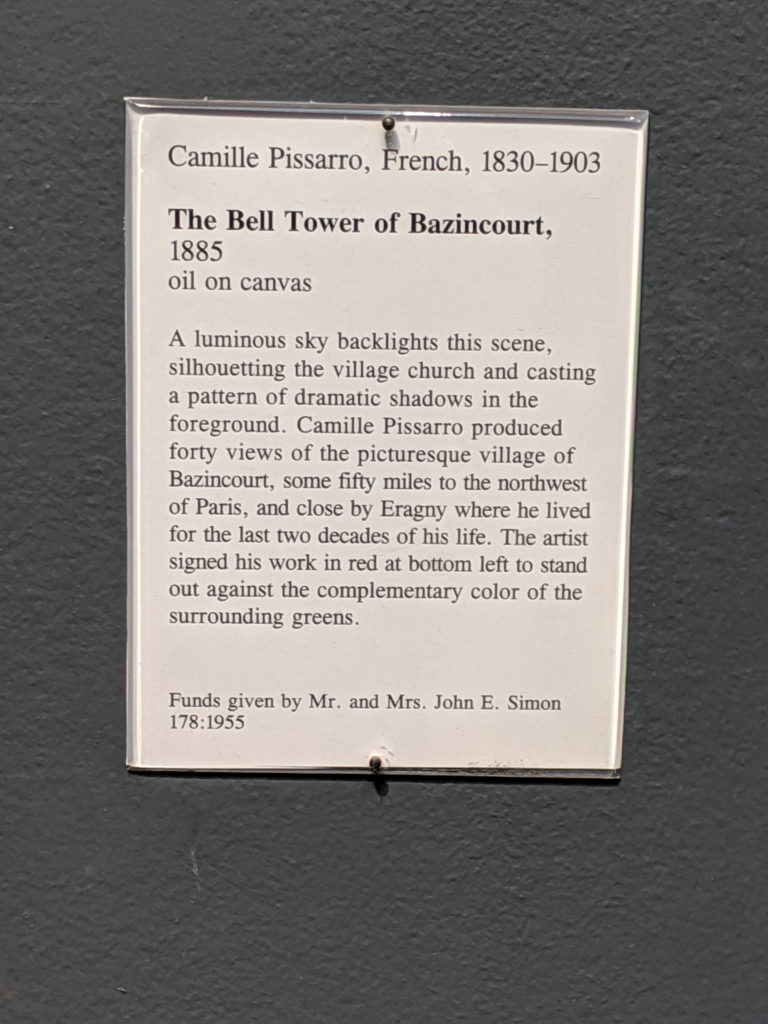I am so excited to talk about this clock, you have no idea! It has been one of my favorite pieces ever in the whole of art history since it came to reside in SLAM in 1997.
This clock does not fit any school of design with any degree of affinity, even the up and coming Dadaism or surrealism movements. It has elements of naturalism, elements of modernism, and elements of art deco, but conforms to none of those things. It is truly a unique animal. When you come around the corner and walk down the corridor toward it, it looks like molten, shifting metal that slowly resolves itself into a form – however, even up close, it never quite loses that molten feel, and it always seems to be in motion even though it is clearly not changeable and is not in a liquid form. It all seems very amateur and avant garde in the same moment, and many people pass it by and dismiss it straight out of hand without another thought.
Part of the reason I adore it so much is that it is so different, so unique, and there is no reason beyond Gaudi giving zero fucks and doing exactly what he wanted to do. This was his piece, and the beauty of his genius was that it still stands up today as what could be a completely contemporary piece of artwork.
